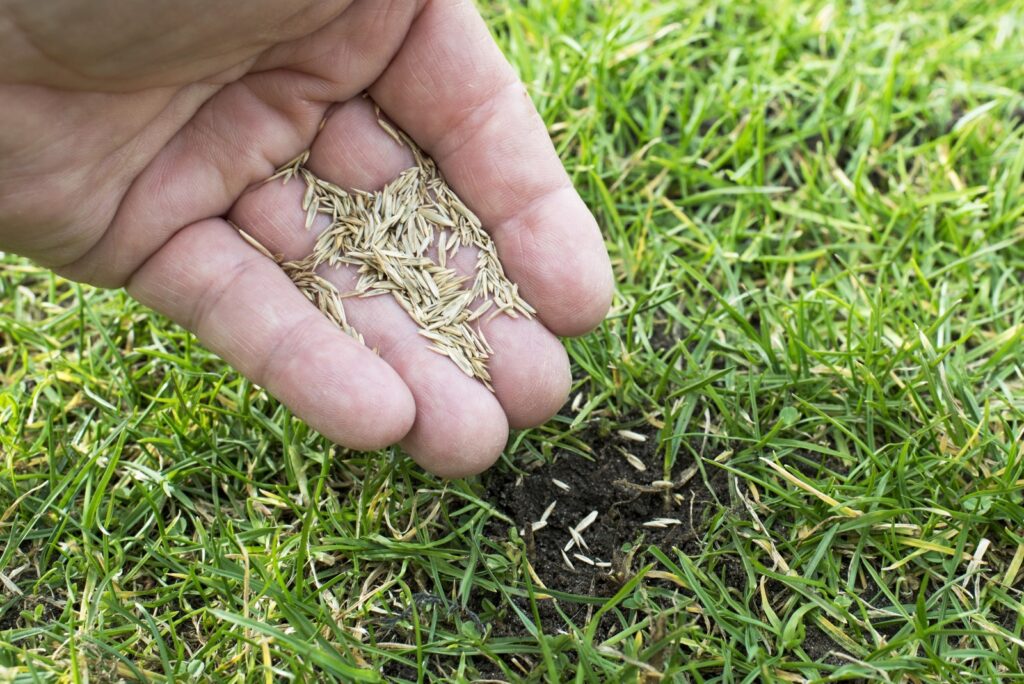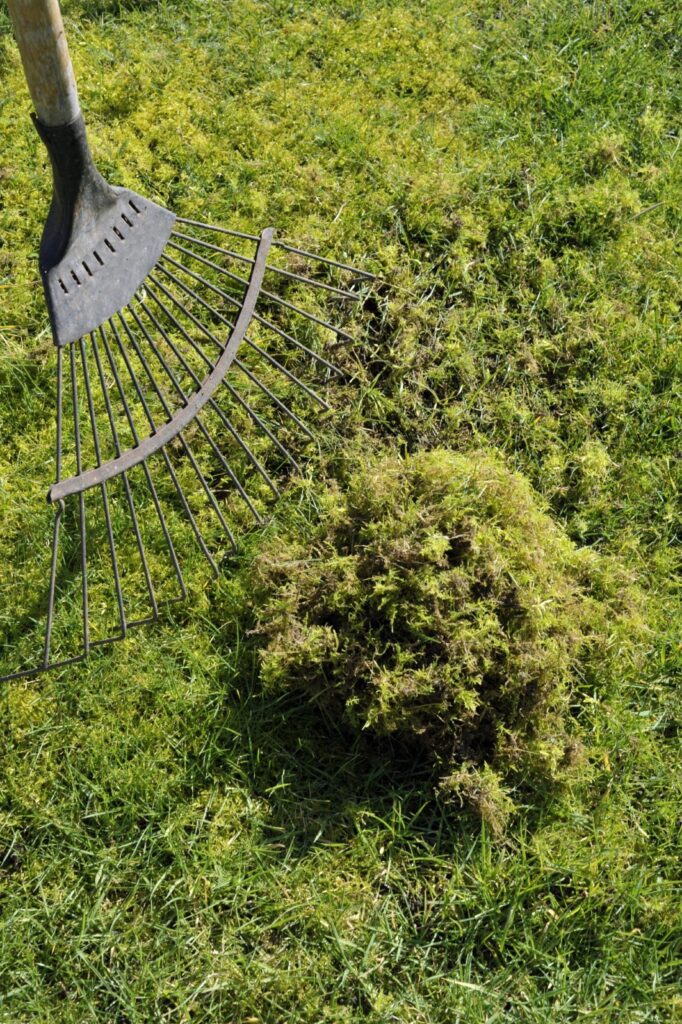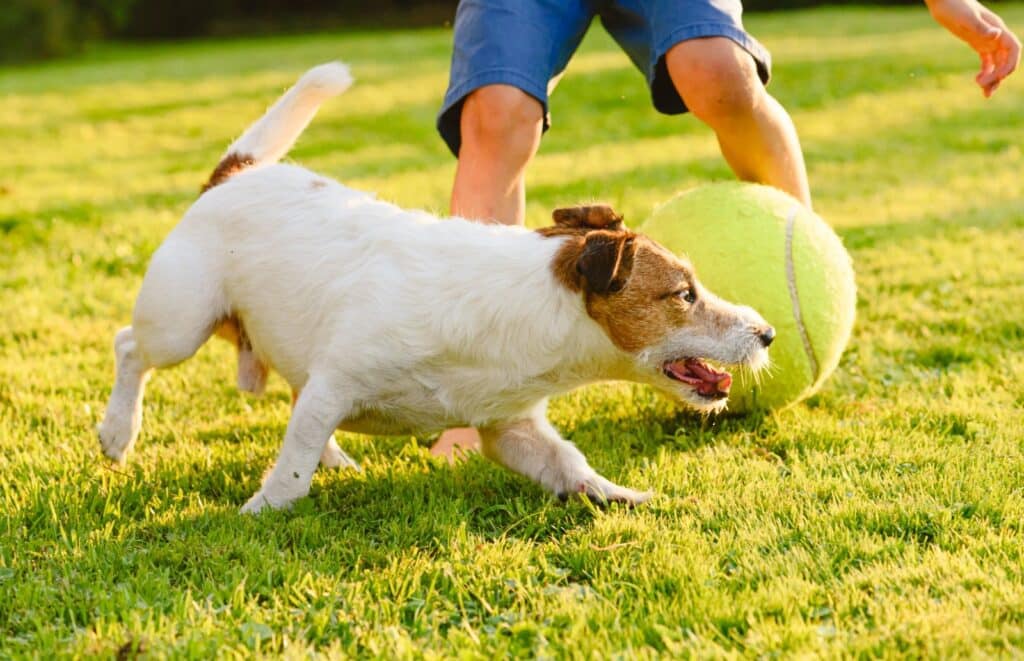
Scarification and overseeding can repair a sparse lawn.
An episode of drought or on the contrary too much rain, too much shade or trampling from regular use… Lawns are sometimes badly treated and need a little facelift to give them back their beautiful appearance of a consistent and dense green carpet. Easy to implement, the technique of overseeding will help you.
What are the causes of grass degradation?
Drought causes many problems: the lawn turns yellow, it has holes, the soil is compacted.
Intense shade or a pH that is too acidic leads to the development of mosses, these aggressive plants quickly take over the grass that makes up the lawn.
Activities such as sports, intensive walking on grassed paths or living areas, but also domestic or wild animals (wild boars, moles…) cause serious damage to the lawn.

When should I repair my lawn?
Autumn is the best time to repair your lawn, as rainfall is frequent and the soil is still warm. Your lawn will then be just right in the spring.
In the spring, growth is rapid but you will have to make sure to water well if it does not rain.
How to repair your lawn?
Bare spots, moss invasion, or too much wear and tear should be treated on a case-by-case basis in order to restore the grass.
Repairing small bald spots
If the lawn has holes or very sparse areas, loosen the soil by scratching the surface with a hook or a hoe.
Remove stones, roots and twigs and spread quality potting soil over the area.
Spread and sprinkle seeds, then tamp down with the back of the rake to push the seed to the soil. Ensure to work to the edges of the patch so that the lawn is consistent.
Water in a very fine stream then protect the area to avoid trampling by pets or children.
If you have the possibility of sowing coated seeds they have the advantage of containing fertilizer and mycorrhizae for optimal growth, but also to repel birds and ants.

Fight against moss
Causes:
A lawn that is too shaded is often colonized by mosses because they are pioneer plants that will quickly become the predominant species if nothing is done to eliminate them.
When the soil pH is too acidic, moss also tends to develop in excess. A coating of calcium carbonate and magnesium carbonate will correct this.

How to proceed?
Apply a selective anti-moss product for lawns.
Wait until the moss has blackened, then scarify or rake the area to remove all moss.
Cover the soil left bare by the moss removal and scarification with quality topsoil mixed with mature compost.
Overseed the lawn in criss-crossing passes and then roll to tamp and hold the seed in place.
Repairing highly used areas
Causes:
Some areas may have been dug up by animals or pets.
Moles are most active in the spring and fall. They are very useful for the ecosystem of the garden, they aerate the soil making it permeable to water and air, they devour slugs, insect larvae (moths, beetles, wireworms…) and never feed on roots. To repair a lawn damaged by moles, do not fill in the molehills immediately, as this would cause new appearances. Wait a week and slip peeled garlic cloves or elderberry manure into the holes to scare them away.
On areas that are often trampled, the only solution is to sow a specific grass seed for sports or playgrounds, made up of grasses that tolerate trampling well.

How to proceed?
Only weeds tend to grow well in the areas that are used. Apply a weed killer with a sprayer on the weeds and let the product work. Scarify the area and remove the waste. Level off with a rake before spreading horticultural potting soil where the weeds were. Apply seeds to the area, compact it with a roller and lightly water it.
Most gardeners are confronted one day or another with a damaged lawn, this situation is not exceptional! You just have to apply the right tactics and products to quickly give it back its beautiful aspect and find a green, consistent and dense carpet.